Research Article, J Nucl Ene Sci Power Generat Technol Vol: 11 Issue: 3
Simulation in Cisco within the Framework of Professional Training of Future Teachers of Computers Science
Yermakhan Zhabayev*, Esen Bidaibekov, Shirinkyz Shekerbekova,Gulnar Arynova, Saltanat Sharmukhanbet
Department of Nuclear Energy Science, Al Farabi Kazakh National University,Almaty, Kazakhstan
*Corresponding Author : Yermakhan Zhabayev, Department of Nuclear Energy
Science, Al Farabi Kazakh National University, Almaty, E-mail:ermahan_zh.h@mail.ru
Received date: 25 February, 2022, Manuscript No. JNPGT-22-45206;
Editor assigned date: 01 March, 2022, PreQC No. JNPGT-22-45206 (PQ);
Reviewed date: 14 March, 2022, QC No. JNPGT-22-45206;
Revised date: 21 March, 2022, Manuscript No. JNPGT-22-45206 (R);
Published date: 24 March, 2022, DOI: 10.4172/2325-9809.1000262
Citation: Yermakhan Zhabayev, Esen Bidaibekov, Shirinkyz Shekerbekova, Gulnar Arynova, Saltanat Sharmukhanbet (2021) Simulation in Cisco within the Framework of Professional Training of Future Teachers of Computers Science. J Nucl Ene Sci Power Generat Technol 11:3.
Abstract
This study examines the training of future computer science teachers in the framework of subject training in the Cisco program. This method is used for specialized training of undergraduate students. Cisco was chosen for the study, which simulated a computer network to gain important skills and opinions when researching works. The purpose of this work is to enable students to study this issue for building computer networks. Students were given a task and, while working on the tasks, the students had what they were able to check. It was also necessary to introduce future computer science teachers to this method during their student years. During the
experiment, it turned out that students started by constantly asking for answers. Using the ICMP Protocol, we successfully transmitted information and were able to show it in the simulation. The process of changing OSI levels when transmitting information was also shown
Keywords: Computer science teacher training, Computer networks, Network modeling, Cisco packet tracer
Introduction
Currently, it becomes more difficult for a teacher to provide knowledge on the subject of computer networks during certain classes, because the influence of the Internet attracts students with different work experience. For all students, it is difficult to give one approach to learning. In practice, we see that among students with comparative learning experience who know computer science and some opportunities to master professional skills in programs such as CCNA Cisco, you first need to start your first year of working in computer networks, but at the same time, students find it difficult to understand the term TCP/IP. In computer networking classes, many students can't understand the basic basic standard terms, which naturally makes their situation difficult. Many students found that the multi-layer model has its own difficulties, but students found that the model copes with this complexity and that the model has its own drawback. The students realized that independence in knowledge of computer networks is currently a problem for many students. It is extremely difficult for many students that there are ideas and ideas in computer networks.
We can also say that in comparison with the device, the organization of computer networks for practical use is very important. This also prevents them from creating their own network. Later, they may configurations, address the local. It is necessary to use simulation in computer network training and training to alleviate these problems. In addition, it requires certain knowledge to process. Computer network classes use a package for using the tracer.A simulated transmission in a packet is created offline. We know that Cisco is an international company that provides training, teaching, training and certification of computer networks on a commercial basis. The package, the software that has to register and attend training, is apparently expensive for them. The activating learning method is a query-based learning method where students develop themselves through activation [1]. This article describes the significant challenges associated with implementing query-based learning, and presents strategies for solving them through the development of technologies and training programs. We also presented a history of software and curriculum design to show how these problems occur in classrooms and how design strategies respond to them [2]. The article considers some well-known models of research training as a set of research processes that is the basis for collaboration in the NetCoIL scientific network[3]. In a study conducted as part of the teaching practice of computer science teachers, we tried to find out whether any of the approaches and activities used by these teachers correspond to the principles of query-based learning. The study examined how preschool teachers cope with these approaches to learning, what is the attitude of modern students to learning programming, how they like this topic and the various activities used in the classroom, and how this type of lesson is perceived by teachers themselves-teachers of computer science in preschool education [4]. Bell and others [5], investigated the main stages, which include problem definition and questioning, hypothesis, planning the design and implementation of experiments, analyzing need to learn how to use the method in practice, they need to experience it in practice as a student. In [6], it was shown that a student's creatively active approach to lessons is the main key to success. To do this, you need to know the modeling tools that allow you to use the observation method. Simulation software is designed to help learners of networking need to have an active learning experience and students can bring a fruitful classroom environment to make it more interactive and effective. In the work[7], software was made that was very useful and economical for students. The study found that there are several network modeling tools available for network modeling [8]. In work [9], Packet Tracer was investigated based on the experience of teachers and students, which provides many advantages. The article [10] studied the main problems in teaching students network technologies using Cisco Packet Tracer. In the course of the work, the students faced the problem of applying the theory learned through simulation to a real situation. In the article [11], analyzed the comparison between Cisco Packet Tracer with experimental data. The results of the study showed that network design and problem solving skills are significantly improved when students use Packet Tracer [12]. This article argues that the visual network design and modeling platform, presented as part of active learning rather than just open distance learning, helps higher education institutions facing dilemmas about how to teach growing students a fundamental understanding of theoretical network concepts [13]. Based on analysis and knowledge, the researchers found that the networks fully meet all the require ments for easy deployment and use [14]. In [15], it is stated that a software modeling tool is available to students.The article [16] investigated that the packet tracer is sometimes used as part of a replacement for using genuine hardware. This is because it uses insignificant hardware assets, continues to work at various stages, and is extremely complex [17]. Cisco Packet Tracer has a lot of preferences compared to using physical hardware. Researchers in the paper [18] investigated that it is easier to implement and use. Herbert & Wigley [19], found that unlike conventional, a rest mode that greatly helps students externally observe the development of packets across the network. Packet Tracer additionally provides tools that allow grades, which can also be used as a tracer package for group tasks [20]. In the article, we built and supported the compared practical cost of classes of Tracer packages. In thе is article, the research was conducted in the form of interviews in order to identify the difficulties that teachers face in improving the ability of their students to apply the theories learned through modeling to real-world conditions. The article develops a program designed for high school students and is based on the LOGO programming language.
Method of Research
The study of networks is one of the important issues in the training of future computer science teachers before studying this problem. This research was implemented in the framework of training in the discipline "computer networks" in preparing future computer science teachers for training. Students of the specialty "computer science"took part in the study. The study was conducted under laboratory conditions. Most of the lessons were based on following specific instructions during classes, special ones that require installation. During the lessons, students first studied this activity, received the task and worked on the tasks, and received it. During the implementation of this study, the following types of research activities were studied detection of the functionality of network elements.
Research Results
In the course of the work, students had to identify certain features of the prepared functional network. The star-shaped object can be defined to observe packets inside, and can also be additionally set for example: the collision associated with the creation of the desired frame.
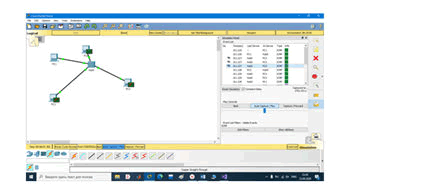
Figure 1:Frame collision when using the hub shows a frame collision when using the Cisco Packet Tracer hub. First, bring the switchboard Hub0 и 4 PC per work area. PC0 -> Ip configuration -> IP (static) = 192.168.10.10 attach ip (Sub Mask - 255.255.255.0), repeat this operation from Figure 1 (ip 192.168.10.11).
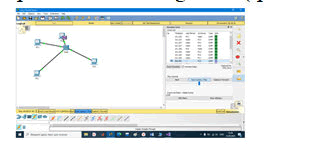
Figure 2:Replacing hubs with switches shows the replacement of hubs with switches. In order to get started students had to open a window PC0 -> Desktop -> Command prompt and run the command ping 192.168.10.11. Complete the test and switch to simulation mode. After Show All / None choose Edit Filters -> ICMP and start the simulation using the button Auto Capture / Play.
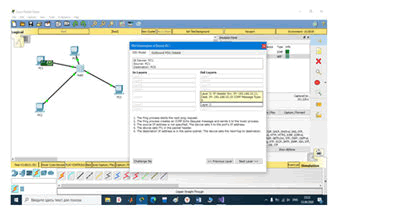
Figure 3:Packet drop due to the fact that you have not set the default gateway.
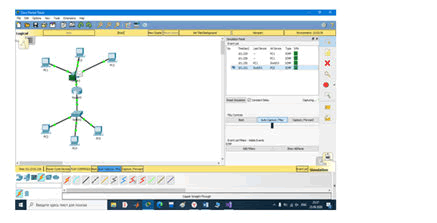
Figure 4:Sending information via the ICMP Protocol.

Figure 5:Showing sending a USI model message.
Necessary elements for project implementation; PC 0 - PC5, routers, switches. Performing ICMP simulation. A Virtual Local Area Network (VLAN) is a switched network segment that is logically allocated according to the functions performed, workgroups, or applications, regardless of the physical location of the users. Virtual LANs have all the properties of physical LANs, but workstations can be grouped even if they are not physically located in the same segment, because any port on the switch can be configured to belong to a specific VLAN. In this case, unicast, multicast, and broadcast traffic will only be transmitted between workstations belonging to the same VLAN. Each VLAN is considered as a logical network, i.e. packets for this VLAN will be switched by the switch only within this VLAN. In order for traffic from one VLAN to get to another, OSI layer 3 network devices, namely routers, are used.
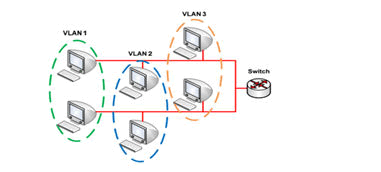
Figure 6:Example of the organization of virtual networks.
The construction of VLAN networks can be carried out in various ways. Basically, three types of VLANs are used:
- Port-based VLAN;
- MAC-based VLAN;
- VLAN based on labels in the additional frame field – IEEE 802.1 Q standard;
We also want to show practical implementation: VLAN's Use Packet Tracer to create the network shown in Figure 6.
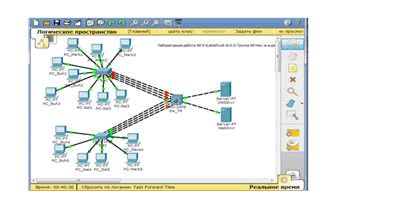
Figure 7:Deployed network using VLAN's, multi-level switch Sw_TR, aggregated and trunked channels.
When executing, you must do the following:
- For the report, save the previously completed part of the work in a separate file, for example, LR_9-1_FIO.pkt;
- For further work, open the saved file and save it again under the name LR_9-2_FIO. pkt;
- Add CISCO 2960-24PT and 3560-24PS switches, and use PC-PT and Servser-PT computers as endpoints;
- On Servser-PT servers, install additional modules " Cisco PT-HOST-NM-1CGE Gigabit Ethernet Network Module Single-port Gigabit Copper Ethernet Interface. (the new module is installed when the power is turned off!). Connect as shown in Figure 6, save the file; To connect the servers to SW-TR, select the Gig0/1 and Gig0/2 ports on the Gig1 servers.
- Let's denote the devices (host names, switches) in the same way as in Figure 6.
- Ports for parallel connections Sw1-Sw-TR and Sw2-Sw_TR to choose from a continuous range of ports, for example ports Sw1 fa0/10-fa0/13 – Sw-TR fa0/1-4.
- Host PC-Buh4, PC-Buh5, PC-Sal4, PC-Sal5, PC-Mark4, PC-Mark5 assign IP address in accordance with the rules of section 3 p. 11., example: PC-Buh4 10.121.12.104;
- For the servers, we will choose, taking into account the future VLAN_5 IDVLAN =NN*10+5, and the IP address rules: 10.125.12.1 and 10.125.12.2
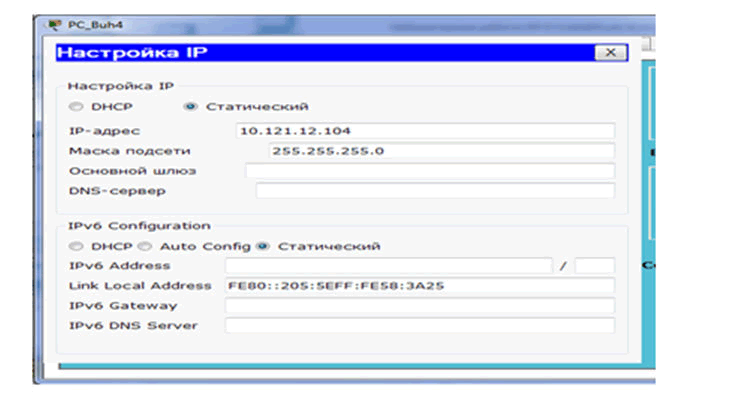
Figure 8:Assigning IP addresses to additional computers on the network.
Setting up a VLAN with a single switch requires a little effort: it is enough to configure each port so that it specifies the number of the VLAN to which it belongs. When VLANs are used in networks with multiple interconnected switches, a magisterial VLAN connection is used on the communication channels between them. A VLAN trunk connection involves switches using the VLAN tag assignment process, where the transmitting switch adds another header to the frame before it is transmitted over the trunk. This additional header includes a VLAN ID field that allows the transmitting switch to associate a frame with a specific VLAN, and the receiving switch to know which VLAN the frame belongs to. For each trunk channel, the 802.1 Q standard also defines one special VLAN identifier, which denotes its own VLAN (this is standard VLAN 1). When creating a territorial local area network that contains many VLANs, you need to ensure that all devices can transmit data to all other devices.
Conclusion
In this study, a Cisco software model was proposed as part of the subject training of future computer science teachers. Using the ICMP protocol, we successfully transmitted the information and were able to show it in simulation mode. The process of changing OSI levels when transmitting information was also shown. An example for students is an activity in which the network consists of running examples. In the course of the experimental work, I had to go through some specific difficulties that manifested themselves in the development of the student.
References
- Edelson DC, Gordin DN, Pea RD. (1999) Addressing the challenges of inquiry-based learning through technology and curriculum design. J Learn Sci 8: 391-450.
[Cross Ref] [Google Scholar] [Indexed ]
- Bell T, Urhahne D, Schanze S, Ploetzner R (2010) Collaborative inquiry learning: Models, tools, and challenges. Int J Sci Edu 32: 349-77.
[Cross Ref] [Google Scholar] [Indexed ]
- Jandric GH, Obadovic DZ, Stojanovic M, Rancic I (2011) Impacts of the implementation of the problem-based learning in teaching physics in primary schools. New Edu Rev 25: 194-204.
[Cross Ref] [Google Scholar] [Indexed ]
- Eastwell P, MacKenzie AH. (2009) Inquiry learning: Elements of confusion and frustration. Ame biol teac 71: 263-266.
[Cross Ref] [Google Scholar] [Indexed ]
- Makasiranondh W, Maj SP, Veal D (2010) Pedagogical evaluation of simulation tools usage in Network Technology Education. Eng Technol 8: 321-326.
[Google Scholar] [Indexed ]
- Ghazali KW, Hassan R, Ali ZM (2011) Simulation tool for active learning of introductory computer network subjects. In1st National Conference on Active Learning 119-122.
- Javid SR (2014) Role of packet tracer in learning computer networks. Int J Adv Res Comp Comm Eng 3: 6508-6511.
[Google Scholar] [Indexed ]
- Elias MS, Ali AZ (2012) Penggunaan Simulasi Packet Tracer dalam Meningkatkan Pemahaman Pelajar Terhadap Konsep Abstrak dalam Matapelajaran Rangkaian Komputer: Suatu Tinjauan Awal.
- Tu H (2012) Study on the application of virtual experiment technology in computer network courses Psychol Res 8: 90-93.
- Shanmugam V, Gopal L, Oo Z, Viswanathan P (2011) Enhance student’s learning with an aid of simulation software to understand Computer Networking Undergraduate courses. InEnhancing Learning: Teaching & Learning Conference 2011.
- Adesemowo AK, Gerber M (2014) E-skilling on fundamental ICT networking concepts–Overcoming the resource constraints at a South African university. InProceedings of the e-Skills for Knowledge Production and Innovation Conference 1-16.
[Cross Ref] [Google Scholar] [Indexed ]
- Janitor J, Jakab F, Kniewald K (2010) Visual learning tools for teaching/learning computer networks: Cisco networking academy and packet tracer. In2010 Sixth International Conference on Networking and Services. IEEE 351-355.
[Cross Ref] [Google Scholar] [Indexed ]
- Sun L, Wu J, Zhang Y, Yin H (2013) Comparison between physical devices and simulator software for Cisco network technology teaching. In 2013 8th International Conference on Computer Science & Education. IEEE 1357-1360.
[Cross Ref] [Google Scholar] [Indexed ]
- Holvikivi J (2012) From Theory To Practice: Adapting The Engineering Approach. Inconference on Engineering Education 30;78.
- Frezzo DC, Behrens JT, Mislevy RJ (2010) Design patterns for learning and assessment: Facilitating the introduction of a complex simulation-based learning environment into a community of instructors. J Sci Edu Technol 19: 105-114.
[Cross Ref] [Google Scholar] [Indexed ]
- Makasiranondh W, Maj SP, Veal D (2010) Pedagogical evaluation of simulation tools usage in Network Technology Education. Eng Technol 8: 321-326.
- Herbert BM, Wigley GB (2015) The Role of Cisco Virtual Internet Routing Lab in network training environments.
- Javid SR (2014) Role of packet tracer in learning computer networks. Int J Adv Res Comp Comm Eng 3: 6508-6511.
- Elias MS, Ali AZ (2014) Survey on the challenges faced by the lecturers in using packet tracer simulation in computer networking course. Procedia-Soc Beh Sci 131:11-15.
[Cross Ref] [Google Scholar] [Indexed ]
- Coffman T (2006) Using simulations to enhance teaching and learning. Virginia Soc Technol Educ J 21: 1-6.
 Spanish
Spanish  Chinese
Chinese  Russian
Russian  German
German  French
French  Japanese
Japanese  Portuguese
Portuguese  Hindi
Hindi 

